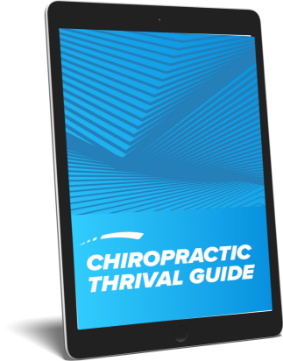By Dr. Christopher Kent
Crystalline substances, when subjected to mechanical stress, produce an electric current. This phenomenon is known as the piezoelectric effect. Closely related is biorheology, the study of the deformation and flow of matter in living systems. The potential clinical implications of biorheology and the piezoelectric effect challenge the imagination.
Basset [1] described the generation of electrical potentials by bone responses to mechanical stress. In a later paper, Basset [2] wrote: “Mechanical energy expended in [these] structures can produce electric potentials of sufficient magnitude to exert a wide range of effects in living systems. These include, theoretically, control of cell nutrition, local pH, control and enzyme activation or suppression, orientation of intra- and extra-cellular macromolecules, migratory and proliferative activity of cells, synthetic capability and specialized function of cells, contractility and permeability of cell membranes and energy transfer.”
Shamos and Levine [3] expressed a broader concept in their paper, “Piezoelectricity as a fundamental property of biological tissues.” Since the publication of these pivotal works, other investigators have expanded our understanding of these mechanisms.
Fukada [4] observed that piezoelectricity is demonstrated in a variety of biological materials, including polysaccharides, proteins, and DNA. On a cellular level, piezoelectric activity is related to microscopic internal strain. It was also reported, “Stress-induced potential in bone is produced by shear piezoelectricity in collagen fibers and streaming potential in canaliculae. The growth of bone is regulated to best resist external force.”
Blum [5], a chiropractor, published a paper addressing non-synaptic messaging associated with the piezoelectric/mechanoelectric effect and relationships between low-level electromagnetic fields and neuromelanin. Blum wrote: “The glial cells which surround the neurons and nerve fibers could be generating an electric field at low levels. This could then allow for communication within the body that would not have to pass directly within the nerve tissue or solely at synaptic junctions. Vertebra under stress might be exhibiting piezoelectric activity, which might also affect these bioelectrodynamics.”
Chiropractors Pettibon and Loomis [6] related piezoelectricity to chiropractic. This paper discussed how alterations in spinal curves could lead to changes in the piezoelectric activity of vertebra. It has been conjectured that such changes may alter nerve function.
Lipinski [7] discussed the possible clinical implications of piezoelectricity on a biochemical level, noting that movements brought about by osteopathic manipulation and other movements may affect biological macromolecules such as proteins, nucleic acids, and mucopolysaccharides. Lipinski wrote that structural elements in the human body are capable of transducing mechanical energy into an electric current.
“Tensegrity” is a modern concept similar to D.D. Palmer’s concept of “tone.” Tensegrity is maintained in “a system that stabilizes itself mechanically because of the way tensional and compressive forces are distributed and balanced within the structure. In cells, tensegrity is maintained by contractile microfilaments, which form a lattice that may reorganize locally into different forms.” [8]
Ingber [8] wrote: “Remarkably, tensegrity may even explain how all phenomena are so perfectly coordinated in a living creature … tensegrity structures function as coupled harmonic oscillators. DNA, nuclei, cytoskeletal filaments, membrane ion channels and entire living cells and tissues exhibit characteristic resonant frequencies of vibration. Very simply, transmission of tension through a tensegrity array means to distribute forces to all interconnected elements and, at the same time, to couple or ‘tune’ the whole system mechanically as one.”
Chiropractic adjustments likely influence tensegrity on molecular, cellular, tissue, organ, system, and organism levels. The concepts of tone, rheology, tensegrity, and resonance, as related to chiropractic practice, deserve further exploration.
References
1. Basset CA, Becker R: “Generation of electrical potentials by bone in response to mechanical stress.” Science 1962;137:1063-.
2. Basset CA: “Review: biologic significance of piezoelectricity.” Calc Tiss Res 1968;1:252-. Quoted in Blum [5]
3. Shamos M, Lavine L: “Piezoelectricity as a fundamental property of biological tissues.” Nature (London) 1967;216:267-.
4. Fukada E: “Electrical phenomena in biorheology.” Biorheology 1982;19(1/2):15-.
5. Blum CL: “The effects of movement, stress, and mechanoelectric activities within the cranial matrix.” Int J Orthodontics 1987;25(1-2):6-.
6. Pettibon B, Loomis W: “Biomechanical research by Pettibon and associates. The piezoelectric effect of the spine under stress.” Today’s Chiropractic 1073 2(2):12-.
7. Lipinski B: “Biological significance of piezoelectricity in relation to acupuncture, Hatha yoga, osteopathic medicine and action of air ions.” Medical Hypotheses 1977;3(1):9-.
8. Ingber DE: “The architecture of life.” Scientific American 1998;278(1):48-.

























































































































































